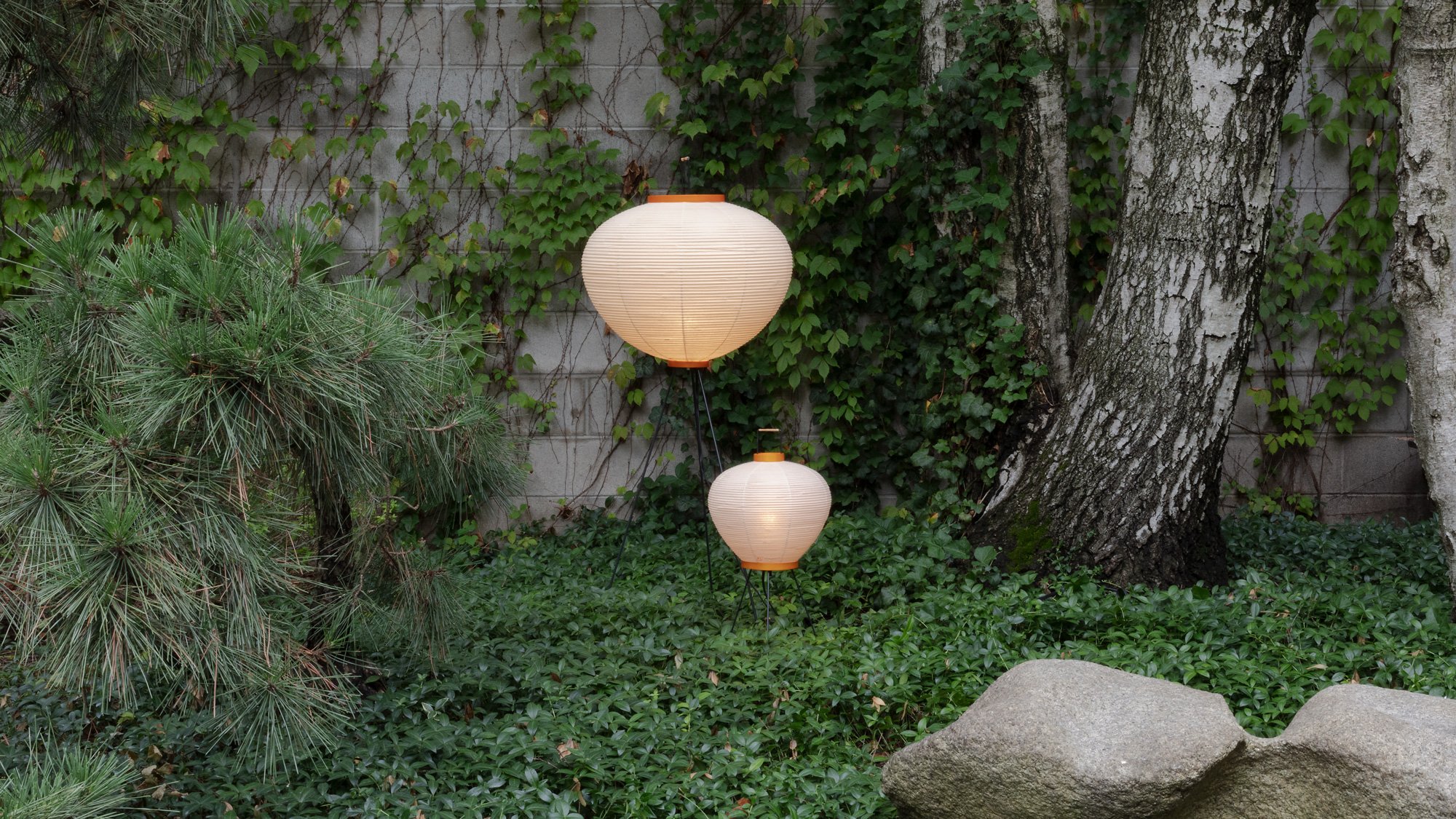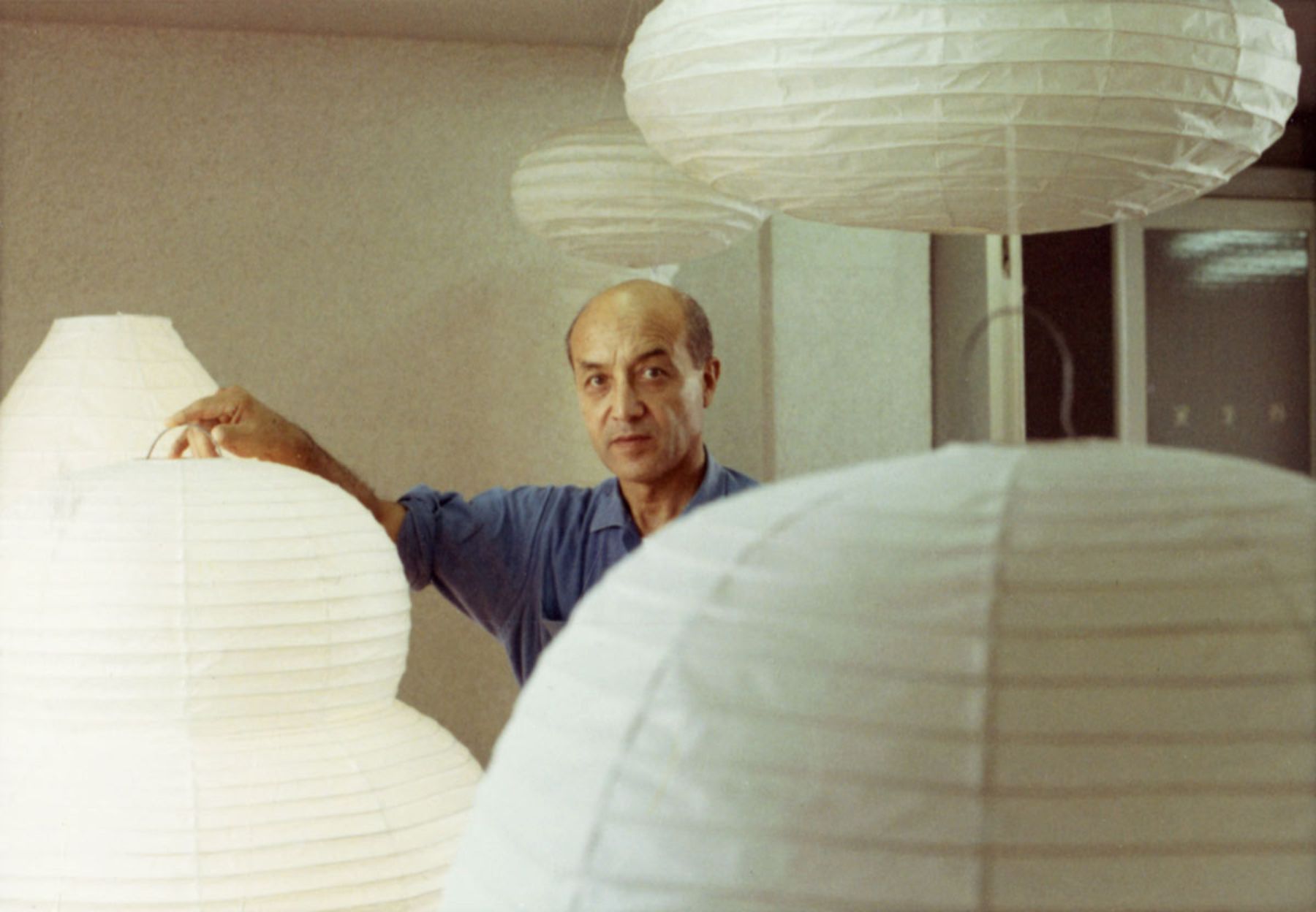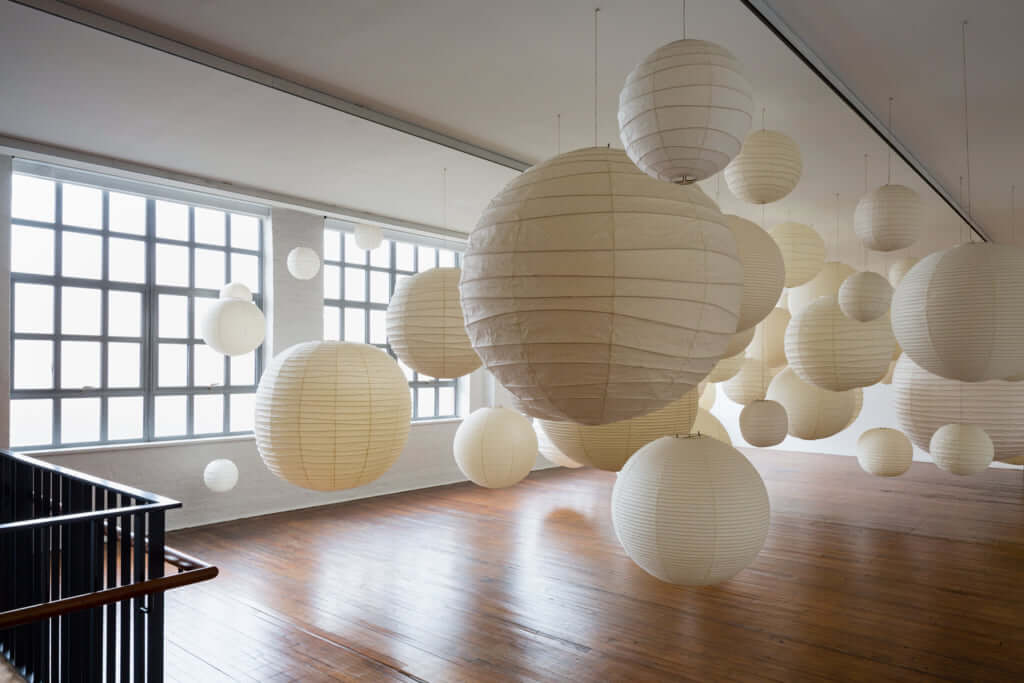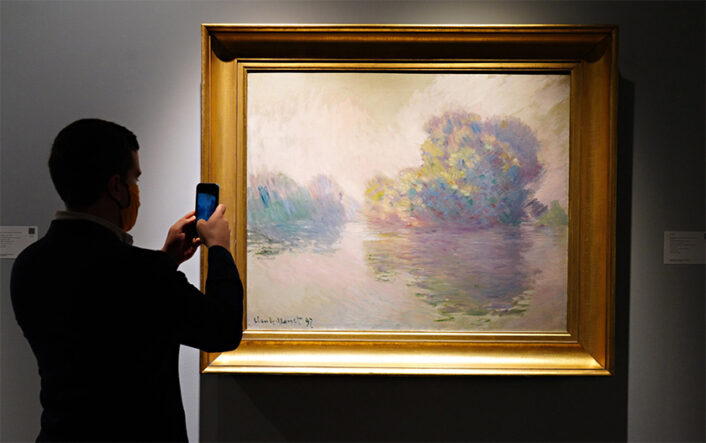Culture
Akari lanterns to the rescue

Two Akari lanterns from the large collection.
Image courtesy of: The Noguchi Museum
Nearly seventy years ago, the Japanese-American artist Isamu Noguchi designed the first of his iconic Akari light pieces. Over the next three decades, he created 183 models; in essence turning the lamps into a symbol of 20th-century design. With a wide range of price points, the Akari lamps are recognizable even to those without any knowledge in design.
Over the past year however, these lamps have become saviors to the Isamu Noguchi Foundation and Garden Museum that bears his name. It is only fitting that this small Queens museum, both designed and established by Noguchi, gets a second chance due to the sales of his quintessential lamps.

At their Manhattan loft, photographers Inez Van Lamsweerde and Vinoodh Matadin suspend an Akari lantern.
Image courtesy of: Architectural Digest, photographed by: Watson Simon
Like most museums around the world, the Noguchi Museum has been hit hard by the global pandemic. When mandatory lockdowns began in March, the museum’s revenue was decimated. Many other New York institutions were forced to make hard choices that consisted of cutting hundreds of jobs or selling art from their personal collections. This Museum, however, was able to retain its employees… thanks to the lamps’ soaring sales.
Brett Littman, director the Noguchi Museum said (in an interview with Katya Kazakina), “We did shut down, but based on the strength of Akari we were able to take care of our people.” He continued, “Noguchi was incredibly entrepreneurial to establish this income source for the museum. There isn’t another museum in the world that has this kind of income potential.” Littman estimates that the lamps brought in $2.4 million at the end of 2020… an increase of 44% over 2019.

Noguchi with his light sculptures in 1968.
Image courtesy of: Bloomberg
When Noguchi visited the Japanese city of Gifu in 1951, the city’s mayor had a request: Could the artist update the locally- made washi paper and bamboo lanterns as these were becoming outdated. Noguchi had a quick and simple answer: add a bulb. Gifu was known for manufacturing lanterns and umbrellas from mulberry bark paper and bamboo; Noguchi’s first lamp was produced using traditional construction methods. To honor the Japanese, the artist called these lanterns Akari, which means “light.”
Before too long, Noguchi and Gifu’s Ozeki & Co. began producing these lanterns. Each one is handcrafted, beginning with making washi paper from the inner bark of mulberry trees. Then, bamboo ribbing is stretched across sculptural molded wood forms. The washi paper is cut into strips and glued onto both sides of the framework. When the glue dries, the shape is set; at this point, the internal wooden form is disassembled and removed. The outcome is a resilient paper product that is easily collapsible. Senior curator of the Noguchi Museum, Dakin Hart, called these pieces, “arguably the most ubiquitous sculpture on the planet.” The inexpensive lanterns for table, floor, and ceiling were also designed to be extremely versatile. They could be folded flat and shipped for almost no cost… and they were instantly a success!

From a 2019 exhibition at the Noguchi Museum. These lanterns, in every form, are timeless!
When the museum reopened last September, the educational studio was turned into a temporary Akari showroom. The room has sixteen windows and an airy interior that overlooks an enormous Katsura tree that Noguchi brought over from Japan in the mid 1980’s. In order to pay homage to the lantern that saved the space, all 110 genuine Akari models were placed in the same space and lit at the same time. It was truly magical!
Image courtesy of: Pen, photographed by: Nicholas Knight
Ranging in price from $175 to $1,800, there is a lamp at every price point. The paper lantern’s soft, warm light is much more appealing than the light emitted from harsh fluorescent LEDs. The warm white light relaxes the eyes and accessorizes spaces in artful and delicate ways. Noguchi designed the lantern so that it can look great whether hung from a ceiling or placed in a corner.
Akari lantern production
People say that once you own an Akari lantern, you’ll never feel the same about light. It is said that all of a sudden you will understand the magic behind these iconic light fixtures. Thus, it’s easy to see why their sales skyrocketed during the pandemic…when people were stuck indoors and searching for reasonable home-decorating ideas.
In 2019, the lamps generated more than five times the income that the Museum made in attendance. We already know that last year’s figures are vastly more impressive. The Akari lantern seems to have amassed a cult following of younger people which speaks volumes to its reverence. Long live the Akari lantern!


